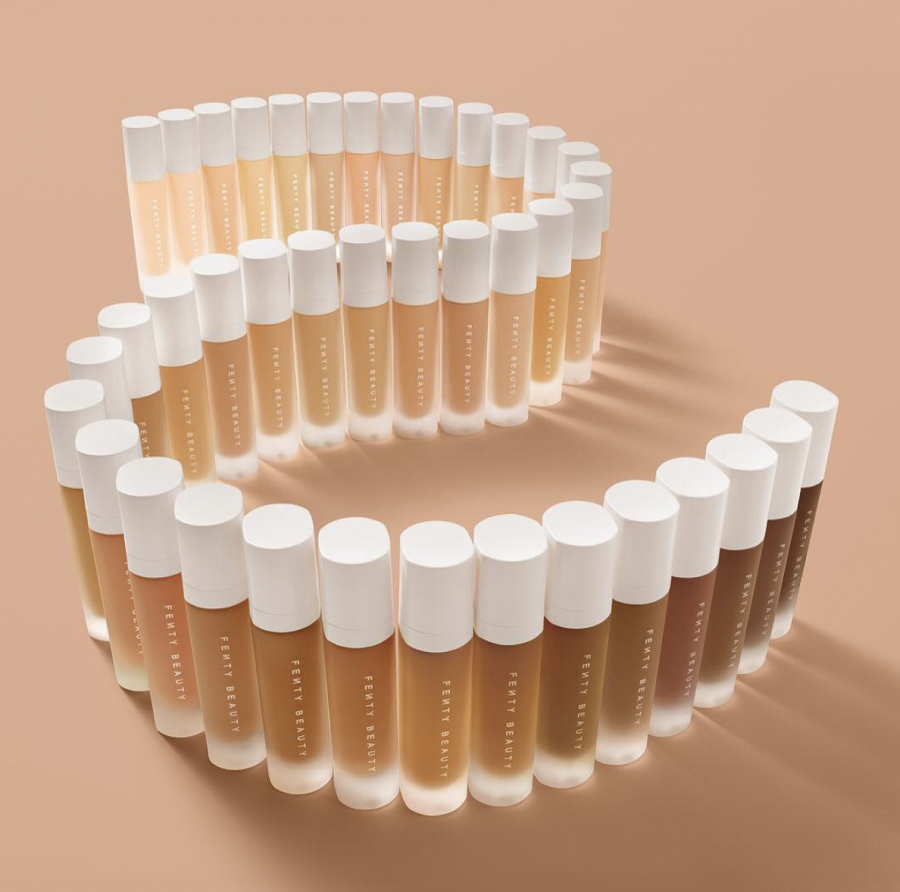Inclusivity in Cosmetics
November 23, 2020
Cosmetics can be used as a confidence booster or a form of self-expression, but inclusivity in the industry has only recently been a point of attention. When a company creates a complexion product meant to exactly match one’s skin color, which colors they choose to create can be controversial. The basis for what the industry considers a good shade range of colors has changed dramatically in recent years.
Representation for everyone, even in something as niche as cosmetics, is crucial in promoting inclusivity as a whole. Making cosmetics available to people of every race is one way to do this, and can be representative of biases held by executives in the industry. Because of these real or perceived biases, those who take into consideration the ethics of the brands they buy from might choose not to support a company that acts this way. In recent years, a majority of cosmetic companies have responded to the fiscal and moral issue by expanding shade ranges immensely.
In 2017, pop star Rihanna’s makeup line Fenty Beauty released its foundation with an unprecedented 40 shades. This changed the way brands would create complexion products forever, and beauty consumers began to call out companies that released less impressive shade ranges. Prior to Fenty’s explosion in popularity, it was not uncommon for a brand to release a complexion product with three to ten colors. Usually, none of these colors would be suitable for people with a darker complexion. Since then, consumers have made an inclusive shade range a requirement when purchasing a new product, and launches that have failed to so have been disgraced.
Brook Harrison is a senior at Capital High School and a frequent makeup wearer. When asked if she has ever been unable to find her color in a complexion product, she said, “as a white person, finding my shade has never been an issue.”
She notes that this is not the case for everyone, “I am very privileged in that regard and have often thought about what it is like for people of color who are often not represented when it comes to shade ranges.”
“In lots of cosmetic ads I see Black women being represented,” Says Lexi McNeil, when asked if she feels represented by the beauty industry. “No matter how light or dark their skin is, cosmetic ads try and find the right fit for someone of color.”
When asked if she’s ever noticed a larger selection of lighter complexion products than darker ones, Lexi said, “I have noticed that but I don’t think it affects me as much because I don’t wear a lot of makeup.” She says, “since I don’t use concealer or foundation that much it would affect me like that.”
Brook says that by limiting a shade range, she feels brands are, “showing the world that it is acceptable to do this to people,” and that it is “saddening and disappointing,” to continue to see.
However, Brook says she’s noticed a shift in the industry, “I think over the past few years a lot has changed with social media outing brands for the lack of inclusivity in their shade ranges and revealing what all these brands have been doing all this time.”
While the lack of inclusivity in the beauty industry of the past is still felt and remembered, the number of conscious beauty consumers has been able to affect the way the industry functions on a fundamental level. The push for inclusivity in this market is just one of many changes we see as social justice movements continue to make their mark on the world.

